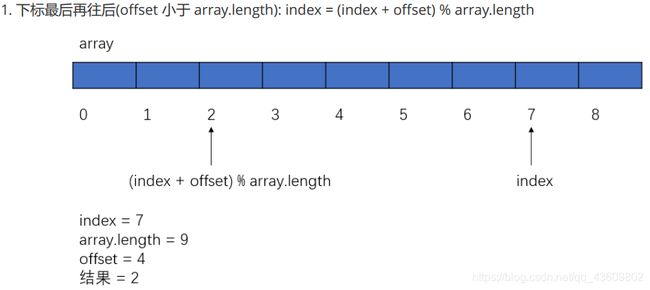Java 栈和队列
栈和队列
栈
-
定义:一种特殊的线性表,其只允许在固定的一端进行插入和删除元素操作。进行数据插入和删除操作的一端称为栈顶,另一端称为栈底。栈中的数据元素遵守 后进先出 LIFO(Last In First Out)的原则
-
压栈:栈的插入操作叫做进栈/压栈/入栈,入数据在栈顶
-
出栈:栈的删除操作叫做出栈。出数据在栈顶
public class StackDemo {
public static void main(String[] args) {
Stack<Integer> stack = new Stack<>();
//push(),压栈
stack.push(1);
stack.push(2);
stack.push(3);
stack.push(4);
stack.push(5);
System.out.println(stack);
//pop(),弹出栈顶元素并返回
System.out.println(stack.pop());
System.out.println(stack);
//peek(),得到栈顶元素不弹出
System.out.println(stack.peek());
System.out.println(stack);
//判断是否为空
System.out.println(stack.empty());
//查找返回一个对象在此堆栈上的基于1的位置
System.out.println(stack.search(3));
}
}
- 实现一个简单的顺序栈(数组实现)
class MyStack{
public int[] elem;
public int top;
public MyStack() {
this.elem = new int[5];
this.top = 0;
}
public void push(int item){
if (this.isFull()){
return;
}
this.elem[top++] = item;
}
public int pop(){
if (this.empty()){
throw new RuntimeException("栈为空...");
}
int index = this.top - 1;
this.top--;
return this.elem[index];
}
public boolean empty(){
return this.top == 0;
}
public int peek(){
if (this.empty()){
throw new RuntimeException("栈为空...");
}
return this.elem[this.top-1];
}
public boolean isFull() {
return this.top == this.elem.length;
}
}
队列
-
定义:只允许在一端进行插入数据操作,在另一端进行删除数据操作的特殊线性表,队列具有先进先出FIFO(FirstIn First Out) 入队列:进行插入操作的一端称为队尾(Tail/Rear) 出队列:进行删除操作的一端称为队头

class Node{
public int val;
public Node next;
public Node(int val) {
this.val = val;
}
}
class MyQueue{
public Node head;
public Node tail;
public void offer(int val){
Node node = new Node(val);
if (this.head == null){
this.head = node;
this.tail = node;
return;
}
this.tail.next = node;
this.tail = node;
}
public int poll() {
if (this.isEmpty()){
throw new RuntimeException("队列为空...");
}
int tmp = this.head.val;
this.head = this.head.next;
if (this.head == null){
this.tail = null;
}
return tmp;
}
public int peek() {
if (this.isEmpty()){
throw new RuntimeException("队列为空...");
}
return this.head.val;
}
public boolean isEmpty() {
return this.head == null;
}
}
循环队列
OJ链接:循环队列
代码简单实现:
class MyCircularQueue {
public int[] elem;
public int front;
public int rear;
/**
* Initialize your data structure here. Set the size of the queue to be k.
*/
public MyCircularQueue(int k) {
this.elem = new int[k + 1];
}
/**
* Insert an element into the circular queue. Return true if the operation is successful.
*/
public boolean enQueue(int value) {
//1、判断是否为满的
if (isFull()) {
return false;
}
//2、rear -->
this.elem[this.rear] = value;
this.rear = (this.rear + 1) % this.elem.length;
return true;
}
/**
* Delete an element from the circular queue. Return true if the operation is successful.
*/
public boolean deQueue() {
//1、是否为空 front和rear相遇的时候
if (isEmpty()) {
return false;
}
this.front = (this.front + 1) % this.elem.length;
return true;
}
/**
* Get the front item from the queue.
*/
public int Front() {
if (isEmpty()) {
return -1;
}
return this.elem[this.front];
}
/**
* Get the last item from the queue.
*/
public int Rear() {
if (isEmpty()) {
return -1;
}
int index = this.rear == 0 ? this.elem.length - 1 : this.rear - 1;
return this.elem[index];
}
/**
* Checks whether the circular queue is empty or not.
*/
public boolean isEmpty() {
return front == rear;
}
/**
* Checks whether the circular queue is full or not.
*/
public boolean isFull() {
return (this.rear + 1) % this.elem.length == this.front;
}
}
常见题:
- 1.括号匹配
- OJ链接:括号匹配
- 解题思路:需要一个栈。用来存放左括号,然后进行匹配操作,但是需要考虑好各种情况
1、遇到左括号就入栈
2、遇到右括号,看一下栈顶元素的括号是否和当前右括号匹配---->匹配:出栈 不匹配:右括号匹配错误
3、直到整个字符串遍历完成
4、遍历完成后需要判断栈是否为空,栈不为空—>左括号多,为空—>返回true
public static boolean isValid(String s) {
Stack<Character> stack = new Stack<>();
for (int i = 0; i < s.length(); i++) {
if (s.charAt(i)=='(' || s.charAt(i)=='[' || s.charAt(i)=='{'){
stack.push(Character.valueOf(s.charAt(i)));
} else {
if (stack.empty()){ //右括号比左括号多的情况,栈为空
return false;
} else {
char chLeft = stack.peek().charValue(); //左括号
char chRight = s.charAt(i); //右括号
if ((chLeft == '(' && chRight == ')') || (chLeft == '[' && chRight == ']') || (chLeft == '{' && chRight == '}')) {
stack.pop(); //匹配则出栈
} else {
break; //不匹配直接跳出
}
}
}
}
return stack.empty();
}
当然还有更好的做法:
public boolean isValid(String s) {
if(s.length()%2!=0){
return false;
}
Stack<Character> stack = new Stack<>();
for(char c : s.toCharArray()){
//遇到左括号则将它对应的右括号入栈
if(c=='{'){
stack.push('}');
} else if (c=='['){
stack.push(']');
} else if (c=='('){
stack.push(')');
} else if(stack.isEmpty() || c!=stack.pop()){
return false;
}
}
return stack.isEmpty();
}
- 2.实现一个最小栈
- OJ链接:实现一个最小栈
- 设计一个支持 push ,pop ,top 操作,并能在常数时间内检索到最小元素的栈。
- push(x) —— 将元素 x 推入栈中。
- pop() —— 删除栈顶的元素。
- top() —— 获取栈顶元素。
- getMin() —— 检索栈中的最小元素。
class MinStack {
private Stack<Integer> stack;
private Stack<Integer> minStack;
/** initialize your data structure here. */
public MinStack() {
stack = new Stack<>();//入
minStack = new Stack<>();//出
}
public void push(int x) {
//1、stack是一定需要放元素的
//2、最小栈当中 是否存放数据 x<= 最小栈的栈顶元素
stack.push(x);
if (minStack.empty()){
minStack.push(x);
return;
}
if (x <= minStack.peek()){
minStack.push(x);
}
}
public void pop() {
//1、stack是一定需要弹出元素的
//2、最小栈当中 是否弹出数据 x == 最小栈的栈顶元素
int tmp = stack.pop();
if (tmp == minStack.peek()){
minStack.pop();
}
}
public int top() {
//跟最小栈没有关系
return stack.peek();
}
public int getMin() {
//每次返回最小栈的栈顶元素
return minStack.peek();
}
}






